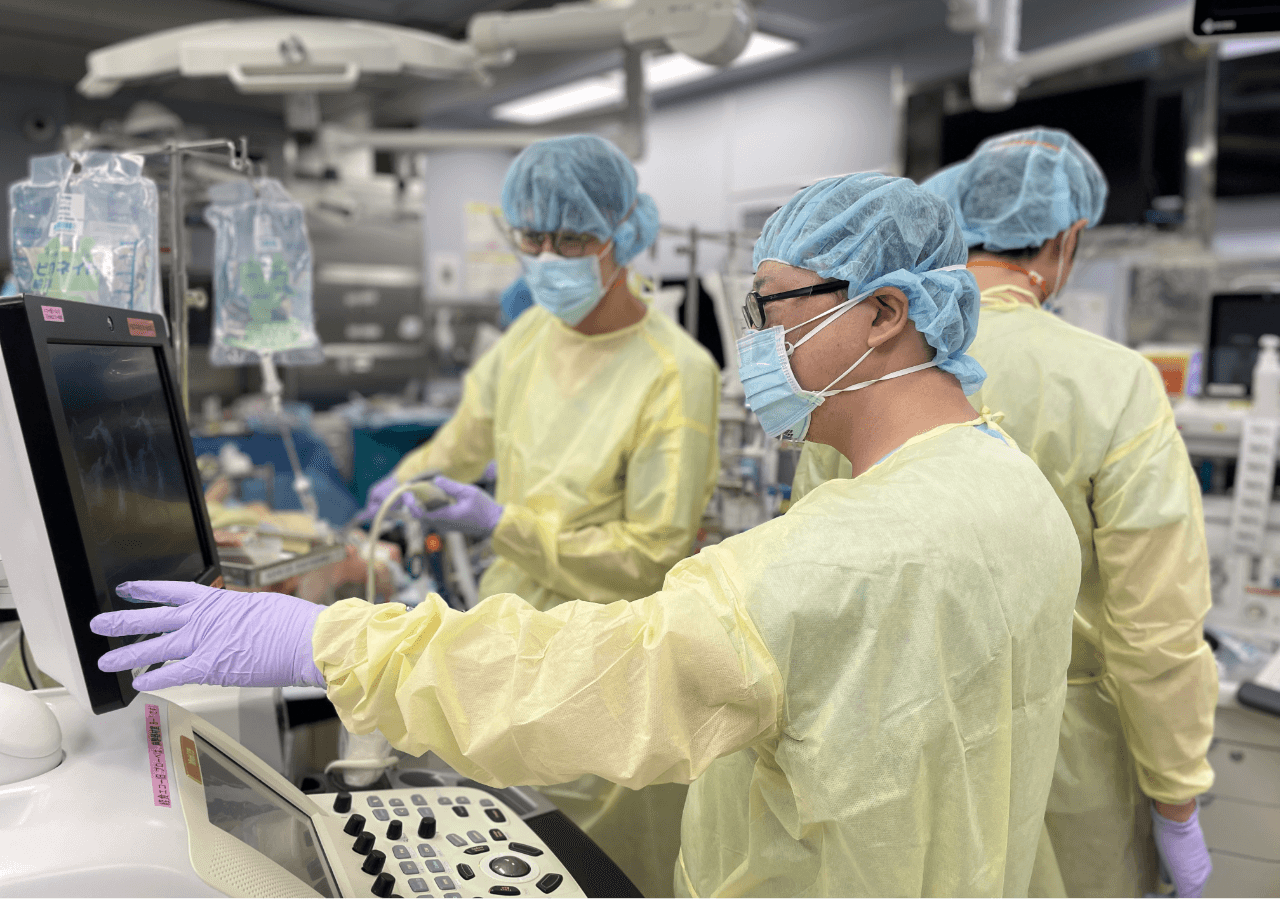Patient Care
General Anesthesia
The surgery is performed while the patient is unconscious. The patient becomes unconscious and stops breathing when the anesthetic is injected or the patient inhales anesthetic gas supplied by a mask. A tube is inserted into the throat to deliver oxygen to the lungs (artificial respiration). Anesthetic gas is continuously delivered through this tube to prevent the patient from being awake during the surgery.
When the anesthetic gas is stopped after the surgery, the patient is awake and recovers breathing. Once the blood pressure and respiration are stabilized, the tube is withdrawn from the throat. After we confirm you are fully awake from the anesthesia, you are transferred back to your room.
If it takes a long time to recover from anesthesia or if blood pressure and/or respiration is unstable, the patient may be admitted to the intensive care unit (ICU).

Spinal Anesthesia
A medication is injected into the subarachnoid cavity of the spine to temporarily paralyze the nerves of the lower limbs.
You remain conscious under spinal anesthesia. While you lie on your side, a needle is inserted in a gap in your spine, and an anesthetic is injected.
Numbness spreads from the toes upward, and the surgery is performed during two to three hours while the anesthesia is effective. You must stay in bed for some time after the surgery.
Epidural Anesthesia
A drug is injected in the epidural space of the spine to paralyze the nerves.
While you lie on your side, a needle is inserted in a gap in your spine, and a thin tube is also inserted. Anesthetic is injected into the tube to alleviate pain during the surgery. The tube is also used for pain relief after the surgery.
Peripheral nerve block
A needle is inserted near the nerve to transmit pain, and anesthetic is injected to alleviate pain during and after the surgery. The target nerve varies depending on the surgery.